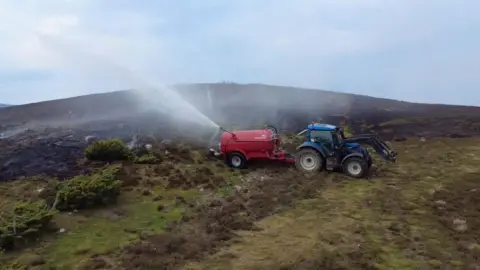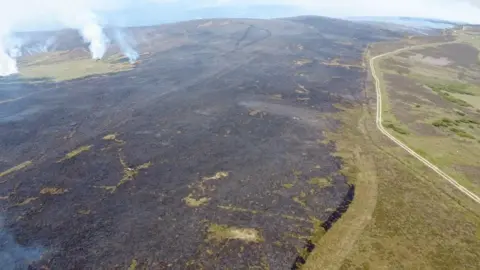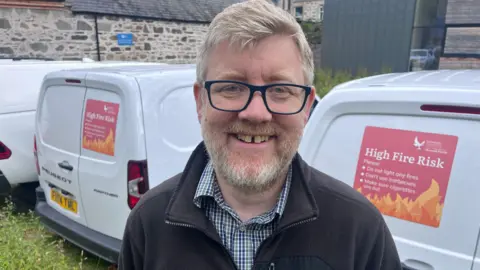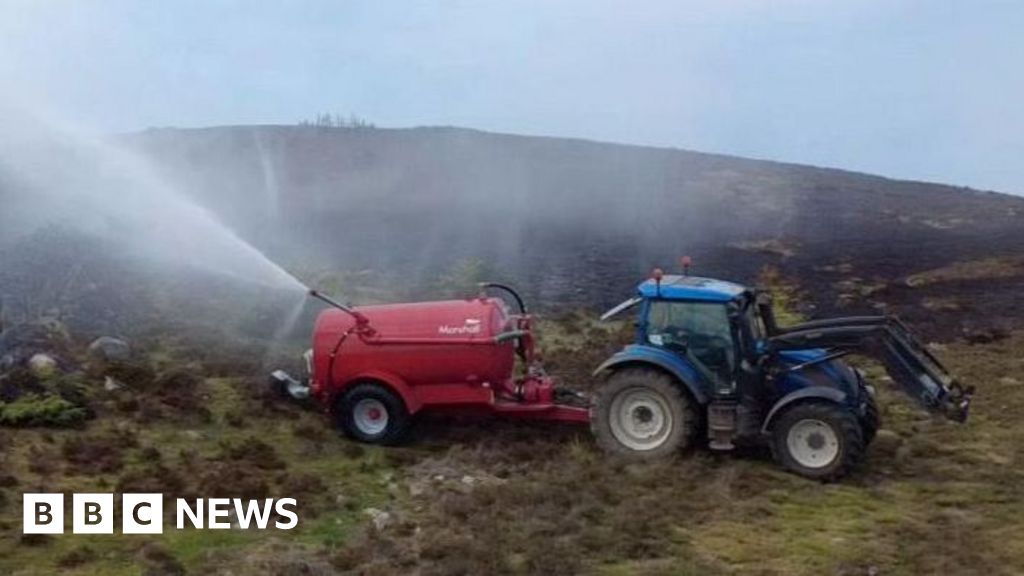BBC Scotland’s environment correspondent
 Alvie Estate
Alvie EstateOne of Scotland’s national parks has confirmed funding to equip a growing army of rural workers who are being called upon to help tackle wildfires.
The Cairngorms National Park Authority (CNPA) has confirmed that 12 projects will share a £270,000 fund to tackle the impacts of climate change.
Money from last year’s pot bought fire fighting equipment used to control and extinguish the largest wildfire in Scotland’s history at Dava in Moray last month.
The park authority says the role of private landowners in preventing and tackling wildfires is increasingly vital.
 Alvie Estate
Alvie EstateWhen fires broken out in July, more than a hundred workers from dozens of private businesses were used to help tackle the blazes.
Scottish Land and Estates (SLE) estimated they were the largest wildfires Scotland had ever witnessed, covering more than 29,000 hectares or 112 square miles.
A fogging unit, which sprays a fine mist on the flames at close range, and a larger converted slurry tank with a hose attached were used on the fires.
Both were bought from the 2024 Climate Adaptation Fund which totalled £370,000.
The pot for this year has been cut by £100,000 and will also be used to fund the installation of solar panels and battery storage as well as planting trees on the banks of the River Spey to shade the water from the sun.

More than 60 businesses expressed interest in applying for the funds for projects which would cost more than £1m in total.
Personal protective equipment, two-way radios and more fogging equipment will be bought for the Alvie Estate near Kingussie.
A remote controlled mower to reduce the height of shrubs and trees – known as brush – will reduce the risk of fire.
CNPA chief executive Grant Moir says people in the Cairngorms have already been experiencing the impacts of climate change through flooding and wildfires.
He added: “It’s absolutely vital that there’s good co-operation between the private sector and the public sector in terms of tackling wildfires.
“What we’re trying to do is to show the park authority is helping to do these things on the ground.”
The Alvie and Dalraddy estates near Kingussie have been investing in technology to fight fires as well as providing training for its people.
Five of the estate’s workers were drafted in to help the Scottish Fire and Rescue Service tackle the huge blaze last month at Dava, about 30 miles away.
They are part of a network of private landowners providing reinforcements and specialist local knowledge to the fire service.
The fire at Dava, and another at Carrbridge, took several days to be put out.
Landowner Jamie Williamson has become concerned that a combination of the warming climate and changes in land management practices are making the countryside more vulnerable.

He said: “It’s building up and speaking to the Portuguese fire service – they’ve been saying we’re only 20 years behind them in having loss of life due to wildfires.”
Last year, dozens of land managers and firefighters from across the world, including Spain, Portugal and Australia, came to Scotland for a conference on how best to tackle the issue.
They demonstrated how leaf blowers and jet washers were being used by land managers, alongside conventional equipment, to tackle the fires.
Scottish Fire and Rescue Service’s lead officer on wildfires, Michael Humphreys, described it as one of the largest threats faced by rural communities.
The fire service has also been investing in new technology and training, including smaller fire engines which can be more easily driven down country tracks.








